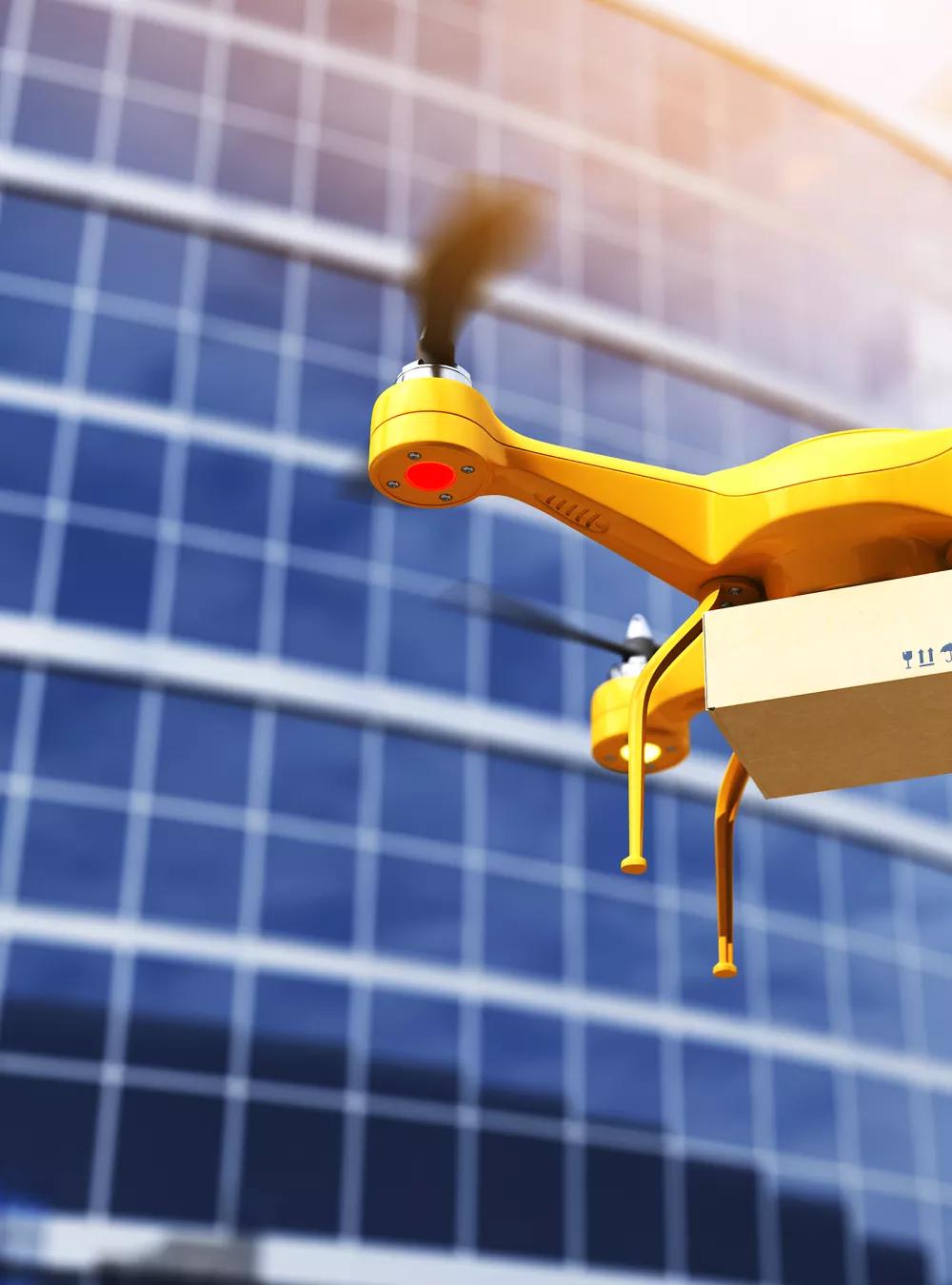Drone and air taxi operations are scaling up across the globe. A MITRE-developed predictive capability will help safeguard these vehicles from a key hazard—the effects of microscale turbulence and other wind conditions.

Microweather Research Shines a Light on Advanced Air Mobility Safety Planning
Imagine hopping on an electric air taxi to travel across town or having your pharmacy purchase delivered by drone. Plans for that future are well underway. But to enable it, factors affecting the safety of these and other advanced air mobility (AAM) operations must be understood.
Key among them is the effect of extremely localized—or microscale—weather. In other words, what low-lying weather conditions could be dangerous for AAM vehicles as they take off and land near or within urban areas? Could a strong gust of wind push a vehicle into the side of a building? Could a small eddy force an air taxi to the ground?
MITRE research is shedding light on this critical issue.
Illuminating Microweather’s Complexities
In traditional aviation, turbulence and wind shear—or the sudden variation of wind velocity or direction—are often contributing causes of accidents.
“The same dangers lurk in the AAM arena, but they can be harder to predict and assess than at higher altitudes, where traditional aircraft fly,” says Mike Robinson, who leads MITRE’s portfolio of microweather research for the Federal Aviation Administration (FAA).
For instance, rows of buildings can accelerate winds or make them more turbulent. Wind flow patterns differ over concrete, asphalt, grass, and trees. As a result, wind shear or turbulence can occur at the intersections of different surface types, creating hazardous conditions for AAM vehicles and the people and property beneath their flight paths.
Conditions can change over time as well. As the sun rises and the ground warms, gentle early morning breezes can become gusty afternoon winds. And winds over bodies of water can change direction as the day progresses.
“These are just some of the complex weather patterns that must be understood to enable safe, full-scale operations of AAM vehicles,” Robinson says. “The intent of our research is to provide that understanding, for the benefit of all stakeholders, from operators to regulators to the public.”
AAM innovations will transform transportation. Our objective is to advance those benefits in the safest way possible.
Mapping Microweather Effects in U.S. Cities
MITRE’s research began with an atmospheric physics model managed by Aeris LLC. After validating that model for use in aviation, our researchers added three-dimensional building, infrastructure, and surface composition data for several U.S. cities identified for study.
“We selected cities where AAM operations are active or envisioned,” Robinson says. “We then used actual or potential flight routes to determine what hazards vehicles might encounter if they fly along those trajectories.”
Finally, the research team developed algorithms that could translate microweather into hazardous operating conditions and the different levels of risk they represent for AAM vehicles.
“The end result is a hazard product we’ve named Shake and Sharp™, where ‘shake’ refers to the turbulence contribution of microweather hazards for AAM and ‘sharp’ to the wind shear contribution,” Robinson explains.
Shake and Sharp can be used to evaluate microweather conditions in any environment for which researchers are able to import building, infrastructure, and land use data. It can also model how conditions change over time, such as when warming ground excites low-level winds.
Informing Broad AAM Decision Making
“Shake and Sharp fills a critical gap,” Robinson says. “Currently, AAM operators have little insight into the microweather hazards they might encounter when setting up operations in a given location. Our research could ultimately help them identify the most viable locations for their operations, the best sites for their vertiports, and even the safest routes and schedules for their flights.”
Other stakeholders could benefit from Shake and Sharp’s insights as well.
In the future, third-party entities will provide weather services and guidance to AAM operators to help them avoid hazardous conditions. That will require the placement of weather sensors in the operational environment.
“Right now, there are questions about where, and at what intervals, those sensors would be needed to provide the greatest benefit,” Robinson notes. “Shake and Sharp could provide those answers.”
As the regulator for both AAM operations and the weather service providers that will support them, the FAA is focused on the benefits of Shake and Sharp in its approval decisions.
“The FAA could also use insights from Shake and Sharp to inform the standards it will set for operators and weather service providers to meet,” Robinson notes.
As the operator of the FAA’s federal R&D center, MITRE’s goals for Shake and Sharp are in the public interest.
“AAM innovations will transform transportation,” Robinson says. “Our objective is to advance those benefits in the safest way possible.”
Learn more about our microweather research: https://www.mitre.org/news-insights/impact-story/mitre-researchers-use-microweather-data-help-mitigate-urban-heat-deaths
Join our community of innovators, learners, knowledge-sharers, and risk takers. View our Job Openings and Student Programs. Subscribe to our MITRE 360 Newsletter.